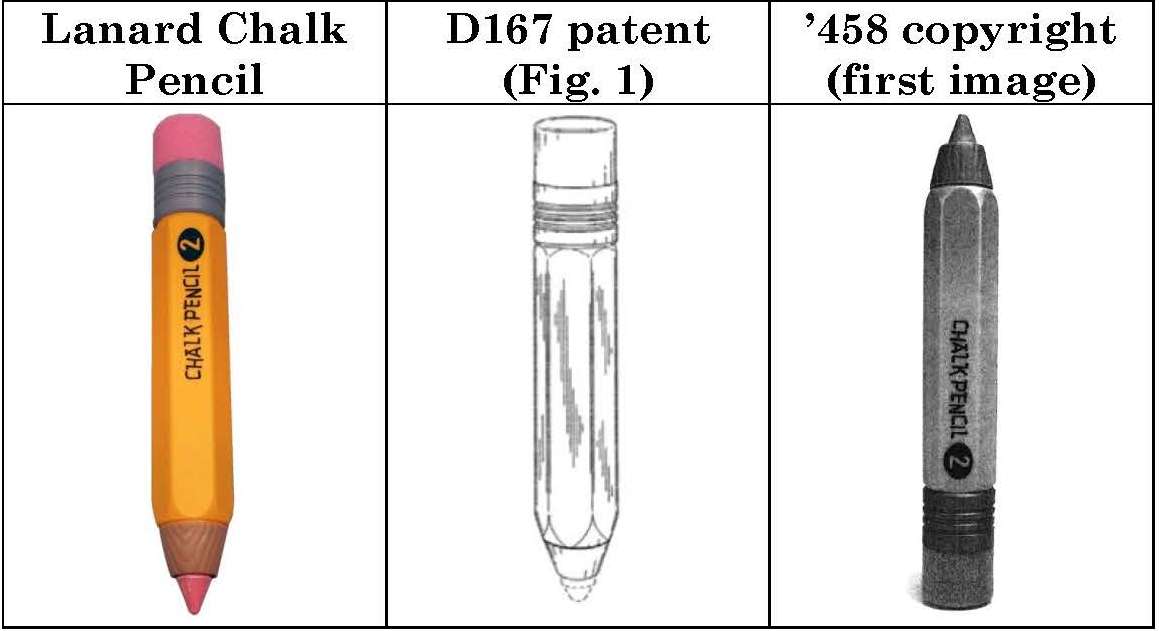 Lanard makes and sells the “Lanard Chalk Pencil,” which is a toy chalk holder designed to look like a pencil. Lanard owns Design Patent, which contains five figures showing a pencil-shaped chalk holder from different angles. Lanard also owns copyright Reg. for a work entitled “Pencil/Chalk Holder.”
Lanard makes and sells the “Lanard Chalk Pencil,” which is a toy chalk holder designed to look like a pencil. Lanard owns Design Patent, which contains five figures showing a pencil-shaped chalk holder from different angles. Lanard also owns copyright Reg. for a work entitled “Pencil/Chalk Holder.”
Comments closed